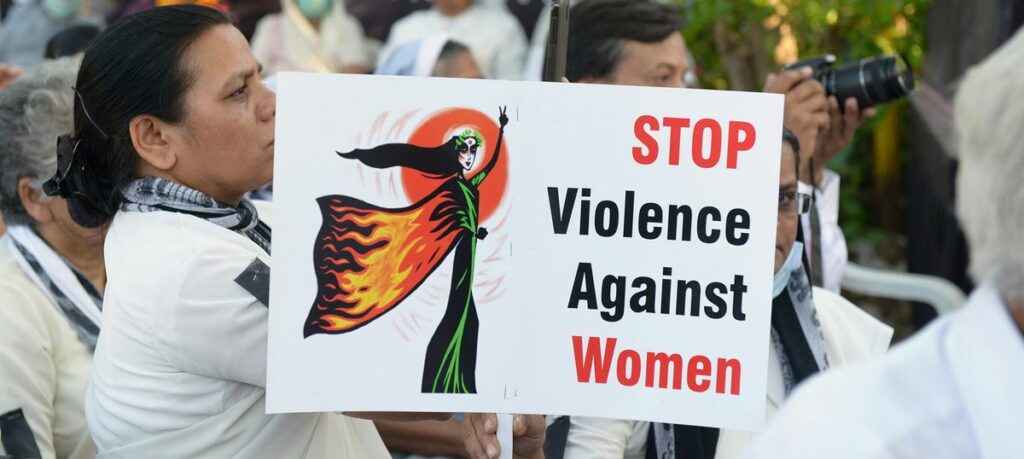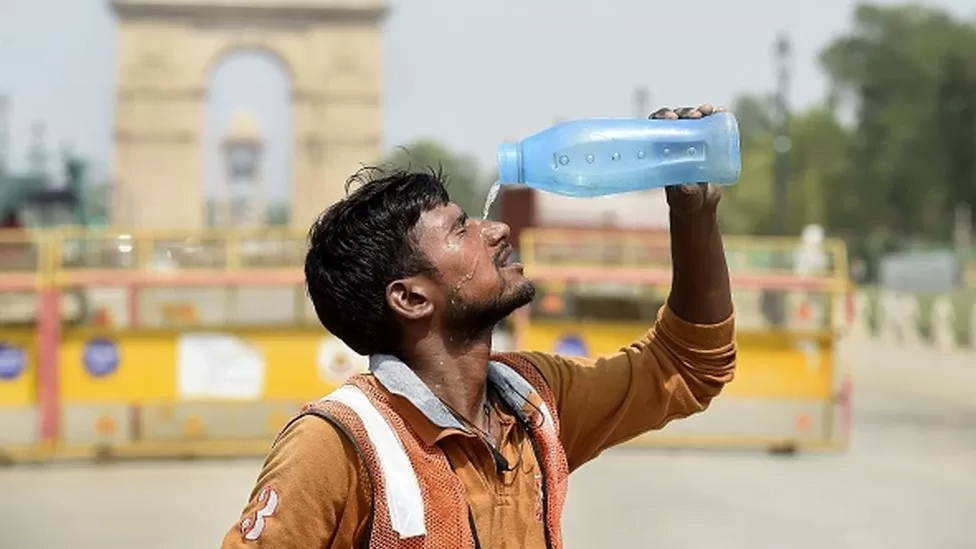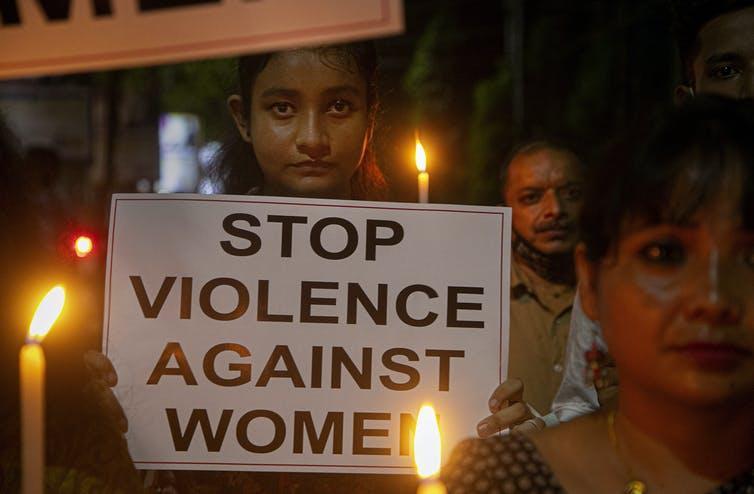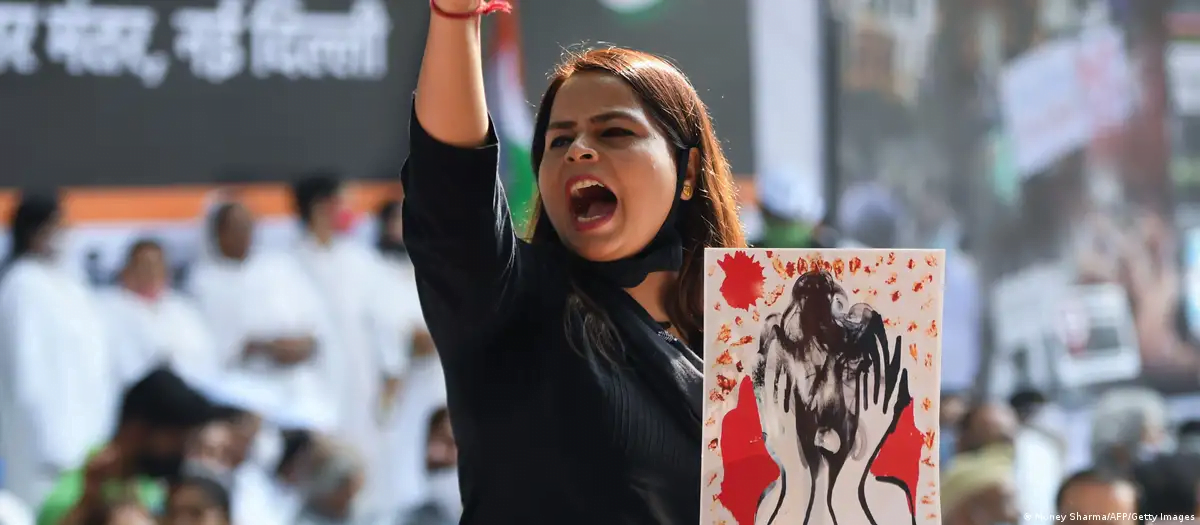The WWA– World Weather Attribution team, an academic group of researchers and climate scientists providing critical knowledge and insights on weather globally, claim that heat waves are 30 times more likely in South Asian regions of India, Nepal and Pakistan. Last month India, especially the north Indian states of Uttar Pradesh, Jharkhand and the capital city Delhi witnessed blazing heat waves, reporting temperatures up to 45 degrees centigrade. Islamabad along with Nepal had reported a 50-degree mark increment with blistering heat waves gripping the two countries.
The climate-induced vulnerability has spiked the rate of domestic violence witnessed in these regions; particularly in India, the rising percentage of IPV- Intimate Partner Violence is alarming. Raising temperature has caused roads and railway tracks to drip off and domestic violence to strike up. The disproportionate impact of the climate crisis on women and girls has been invariably ignored or is less focused on, until recently, the UN Intergovernmental Panel on Climate Change identified a link between climate change and violence, citing the growing and factual evidence that extreme weather abnormalities are driving domestic violence. It also, emphasised global implications on public health and gender equality.

According to research, the average yearly rise in the Earth’s temperature by 1 degree Celsius has led to a 4.5 per cent increment in domestic violence, and close to 195,000 ever-partnered women across the three South- Asian countries of Nepal, Pakistan and India fall prey to domestic violence and femicide. Women who have had sex, been married or have been in a romantic relationship are termed under Ever- Partnered women.
Rising temperature globally, and climate-induced disasters have caused a drastic decline in economic and educational opportunity which is among the several reasons for increasing gender gaps which has exposed girls and women to physical and mental abuse. Several academic studies and humanitarian works by activists from around the world are of the view that the “link between violence against women and extreme weather events needs more research, unlike the hard science of climate change, the complex drivers of violence cannot be easily framed in numbers,” they say.
Studies predict that by the end of the 21st century, India is to experience the highest increase of about 23.5 per cent in domestic violence wrapped in consequences of climate crisis; on the same footing aback are Nepal and Pakistan. The climate-caused crisis has an entire community suffering; a community that is ceasing to exist amongst the disproportionate natural calamities, sadly having least-to- no accessibility to even the basic resources to get through; the low-income households and poor people make up this community.

Extreme heat has led to a significant decrease in working hours advancing to seasonal unemployment, in turn leading to reduced wages and increased stress loads, triggering domestic violence, sexual abuse and mental harassment.
The eastern states of India, that experience frequent downpours and often devastating floods are amongst the many causes of violence against women. Sudden economic crisis tends to exacerbate poverty and increases mental stress, with women being easy prey as stress busters to their abusive partners or other family members as they have nowhere to go and they cannot rely on authorities for help. As communities and families suffer to meet their end needs and suffer hunger, there is the increased experience of broken family structure, all of which adds to the subversive suppression of women.
The study ‘Association of Ambient Temperature With the Prevalence of Intimate Partner Violence Among Partnered Women in Low- and Middle-Income South Asian Countries,’ by the JAMA Psychiatry a medical journal published by the AMA American Medical Association with the help of DHS – Demographic and Health Survey, it was reported that women and girls aged 15-49 from India, Pakistan and Nepal between the years 2010 and 2018 experienced physical and emotional abuse and were subject to sexual violence, driven by warming climate.
India reportedly has the highest rate of domestic violence among the three, with reported maximum accretion in domestic abuse, a rise of 1C leading to an 8 per cent rise in physical abuse and a 7.3 per cent rise in sexual violence.
In an agrarian economy like India, where more than half of the population is engaged in the primary sector as their sole source of income, drastically rising temperature, and unintended rain has caused a subversive impact on the overall production in this sector- resulting in crop failure, eat into economies, crumbling infrastructure, Etc. leaving people unemployed and trapped indoors; this has not only caused overburdening of the responsibility on the women of the family but also, is putting families under extreme stress and pushing up violence rates of which women are more vulnerable prays.

In an interview, Suniti Garg, an activist working with the Mahila Ayog– Uttar Pradesh Commission for Women, claimed that the state saw increasing reports of domestic violence, she was convinced of the fact that increasing temperature was among the many to be blamed for the cause, ‘When a man migrates to another state in order to work it can help keep home fires burning but when he cannot for whatever reason his wife is at the receiving end of his anger and feeling of uselessness,’ she says.
Surrounding temperature has a significant impact on the human body, there is evidence providing that, extreme heat can trigger stress and lower inhabitation, it can lead to excessive aggression and increased production of adrenalin in the body, leading to emotional irregularities among the people; at times increasing the risk of traumas and post-traumatic disorders.
Sharing in an interview, Shilpi Singh, director of Bhoomika Vihar an organisation aiming for a society free from all gender-based violence based in Bihar, said that the “climate crisis had widened the gap of the unequal relationship between men and women,” it is a matter of fact that in countryside physical abuse of women is portrayed as a right of her husband and to which they women have succumbed to, advocating it as their authority and internalizing it as a concept. Hardships caused by factors of climate change have worsened the situation, especially in such areas.
According to global speculations by Science it has been found that increasing temperature has caused a rise in feelings of hostility and raging thoughts therefore leading to aggressive motives which at times also lead to regional conflicts among communities.
In an archaeological study, ‘Climate Change Intensified Violence in the South-Central Andean Highlands from 1.5 to 0.5 KA (AD 470–1540),’ historical evidence of the highlands suggested that owing to the proposed potential competition of survival with respect to limited resources because of climate disparity must have led to interpersonal violence; there was evidence from remains projecting head injuries signifying interpersonal violence and its proxy.

The epidemiological pieces of evidence of this cross-sectional and multi-country study provide that high ambient temperatures are catering to the increased risk of IPV against women, highlighting the vulnerability and inequality women are prone to in low and middle-income countries in the context of the global climate crisis.
The study, suggest a need to address the domestic violence pertaining to climate- crisis, especially in areas that are climate sensitive; prime focus is needed for sustainable climate change mitigation and adaptation strategies along with public health program, to address the issue of domestic violence /intimate partner violence in such areas.
About the author(s)
Anupama intends to be an artist in neutral, aka a dabbler- cum-learner. Her interests lie in music, nature, stories transcending cultural boundaries, human welfare, etc. When she is not around she can be found strolling along the ghats of Varanasi. To add she has a lab- named Miley.






